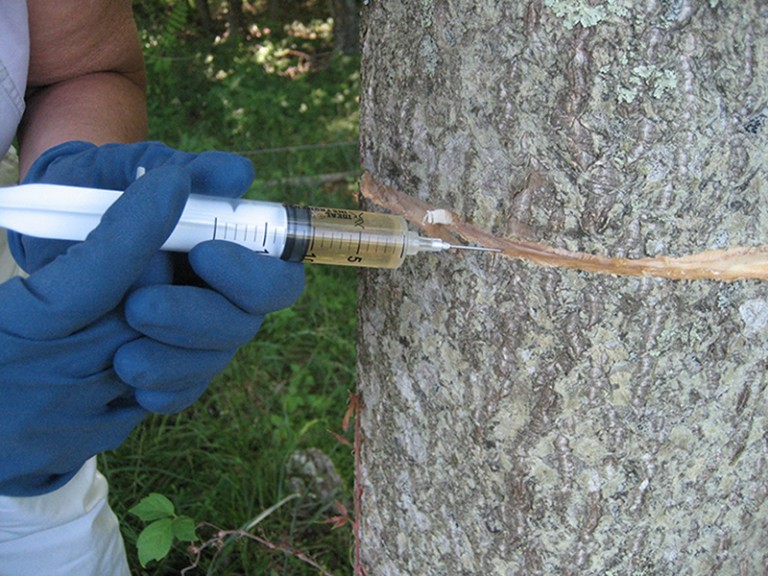Our Program
Since understory plants appear in different seasons, spring, summer and fall tallies are required. With the resulting information and input from owners, we develop a long-range plan and maintain a historical record for understanding each evolving old-growth forest.
We contact the owner annually to develop a plan for the year that will concentrate on the control of non-native invasive plant species from Ailanthus and oriental bittersweet to rampantly spreading stilt grass (Microstegium) and allelopathic garlic mustard whose chemistry inhibits the growth of associated tree seedlings. To counter deer browse, we sometimes help cage young trees, especially oaks, or fence off critical areas.


An essential element of the plan is our annual matching grant to each forest to implement the plan’s goals. The owner hires and pays helpers and we match the owner’s expenditures to a predetermined limit. The Foundation decides on the amount to be made available–to date, $3,000 annually.
While other organizations have old-growth forests in their portfolios, we are unique in creating future old-growth forests entirely in partnership with private landowners. Existing old-growth forests tend to be on nearly inaccessible sites too difficult to log. Our program will help forests thrive in areas easier to reach. They will become ecological gems available for research and education and, for the communities where they are located, sources of understanding and pride.
Program Benefits
Old-growth forests are being created in locations where there are now none. We will be able to demonstrate successful carbon sequestration. Just as experienced businessmen keep track of their inventory, we will too in our forests. In the long run this information will have great value for understanding the processes occurring in these forests. Forests such as these will offer excellent educational and research opportunities. We consider them “forests as laboratories” and have already hosted research on gypsy moth control, ailanthus eradication and more.
See also, Old Growth Benefits
Forest Selection Guidelines
We seek private landowners who have a strong conservation ethic and who are willing to place a conservation easement that restricts timber harvesting on their property. Forests should be 100 acres or more with a significant number of trees 70 years or older. Adjoining forested lands are important and we attempt to engage owners of neighboring parcels in our mission.
Our Cooperating Forest Program allows for exceptions. Exceptions for size and age are made for sites of outstanding soils, diversity of habitat, proximity to sensitive location, or other special situations. In some cases, forests may graduate from this program to become a 500-Year Forest. If not, Cooperating Forests still embody our philosophies of managing for old-growth.
Forest Selection Process
Our first contact determines whether the forest fits our guidelines. A visit is scheduled so the forest owners can show us their property and tell us their vision for their property. While walking the property with the owners, we determine if their objectives and ours reasonably coincide. This is an information gathering session. The property owners come to understand our program and we outline the information we need. Usually there is already a conservation easement covering division rights on the property. If not, we discuss how the conservation easement is applied. If so, we talk about the additional language we would like to add to the easement specifying that this is a 500-Year Forest in which there will be no future harvesting of timber. There are tax advantages for placing a conservation easement on the property and foregoing the harvesting of timber.
We arrange for a visit from an ecologist to evaluate the forest to allow us to decide the merits of this forest becoming a 500-Year Forest. With a positive response from this report we seek approval of the Foundation’s Board of Directors. We can be helpful in the conservation easement process which involves a lawyer, appraisers (one for the value of the development rights, and one for the valuing of timber stumpage), a broker on occasion, and usually the Virginia Outdoors Foundation, if in Virginia.
